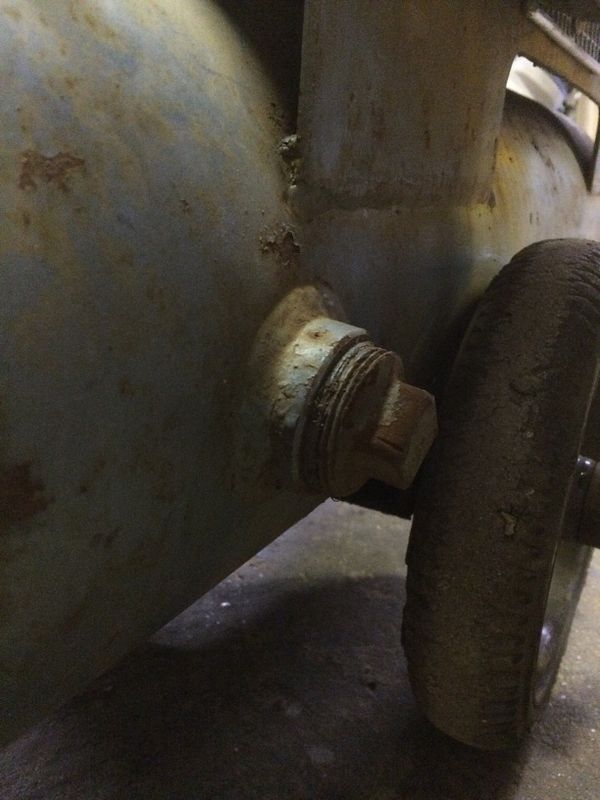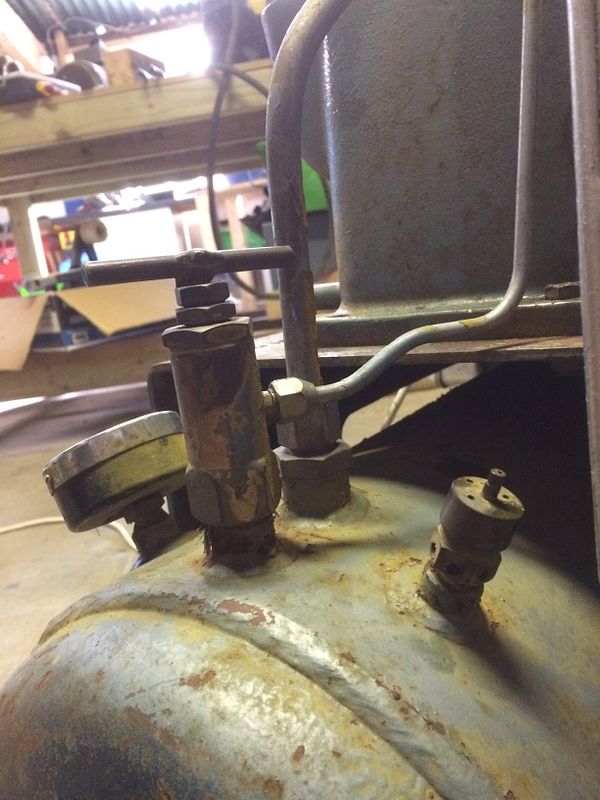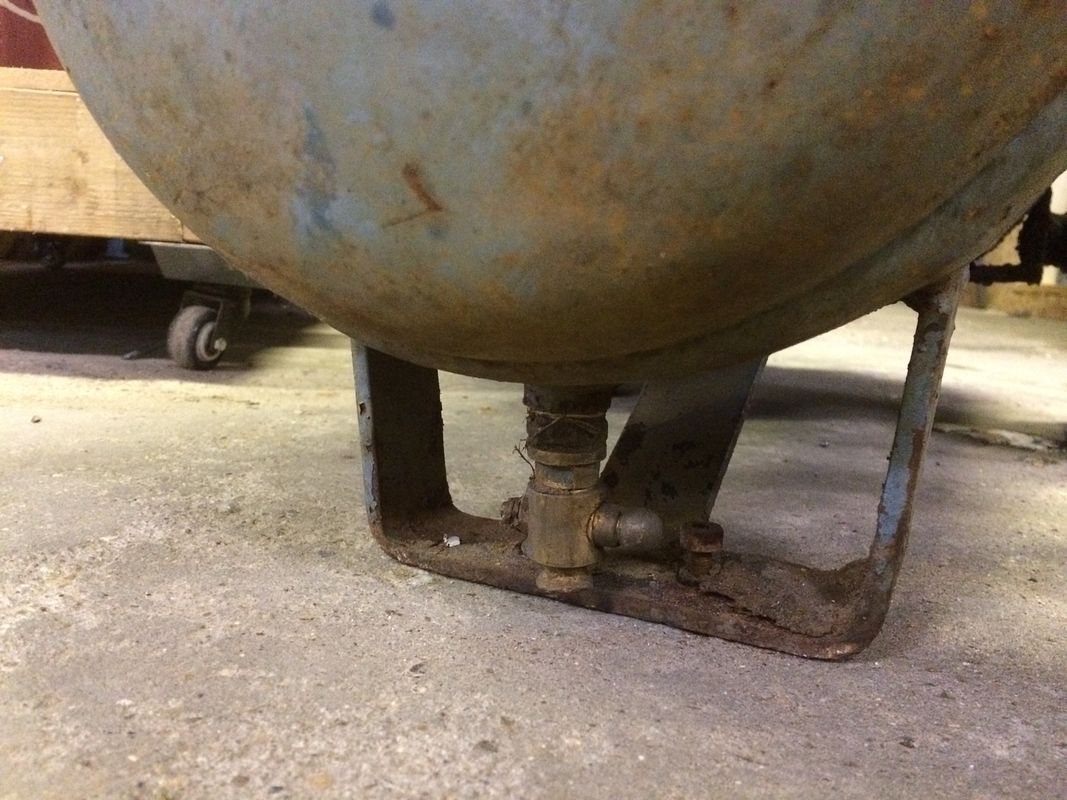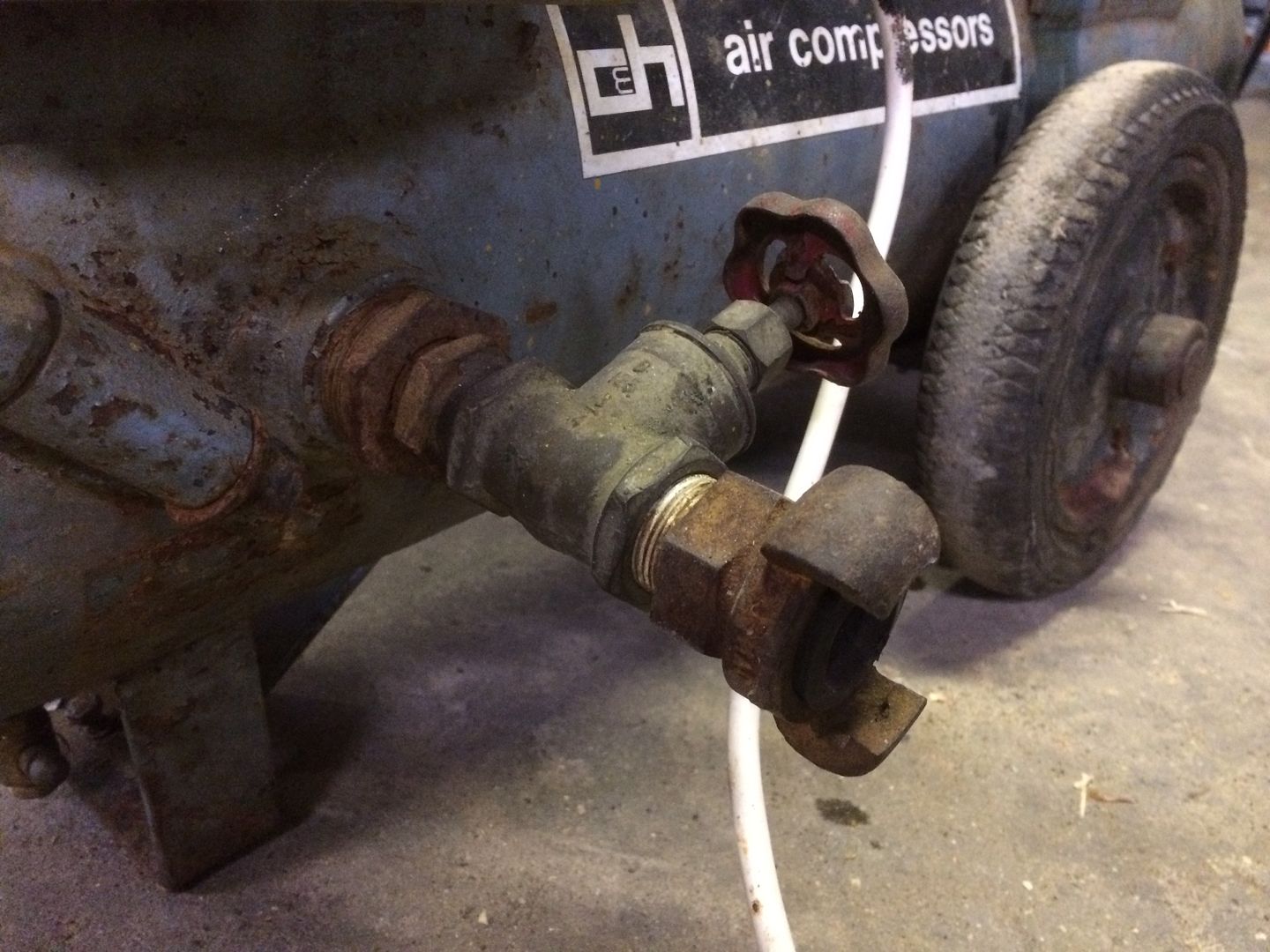curtisrider
Established Member
I acquired a compressor with a duff motor last year and have only just had a chance to take a peek at it. After replacing the motor with a spare it pumps a treat but there is a important component missing... the pressure switch! I have whacked on a regulator and it all works fine but I daren't leave it on too long for fear of ending up in pieces.
I'm not sure how it has been used without one, and to be honest I'm not entirely sure how to plumb one in as I'm not sure where I can tsp into so I was hoping you guys could point me in the right direction. The make is C&H who haven't existed for about 30 years it seems however I'm fairly confident something can be retrofitted. I'm not 100% sure of my terminology and what I need so if people could correct me or advise as to what i should be fitting/replacing that would be great.

At the back on the side is this which I'm assuming is a massive drain plug

At the back on the top, tank pressure gauge left, some sort of pressure valve (spring loaded inside) in the middle with a handle welded to it for a reason i'm not entirely sure of, and another pressure valve on the right

At the front on the bottom there is a drain tap that I don't understand how I'm supposed to operate

And at the front side is another drain area with a tap, from what I have gathered this may have been for a certain type of air tool to connect to?

I have been looking at pressure switches online and I'm not sure what is suitable, there seems to be generic cheap ones that vary from £6 to £30 yet seem to be the same unit, I also think I should replace the pressure release valve/s for peace of mind but I'm not sure how many bar they should be rated at?
Any help would be great, it would be nice to get the old thing running safely
I'm not sure how it has been used without one, and to be honest I'm not entirely sure how to plumb one in as I'm not sure where I can tsp into so I was hoping you guys could point me in the right direction. The make is C&H who haven't existed for about 30 years it seems however I'm fairly confident something can be retrofitted. I'm not 100% sure of my terminology and what I need so if people could correct me or advise as to what i should be fitting/replacing that would be great.

At the back on the side is this which I'm assuming is a massive drain plug

At the back on the top, tank pressure gauge left, some sort of pressure valve (spring loaded inside) in the middle with a handle welded to it for a reason i'm not entirely sure of, and another pressure valve on the right

At the front on the bottom there is a drain tap that I don't understand how I'm supposed to operate

And at the front side is another drain area with a tap, from what I have gathered this may have been for a certain type of air tool to connect to?

I have been looking at pressure switches online and I'm not sure what is suitable, there seems to be generic cheap ones that vary from £6 to £30 yet seem to be the same unit, I also think I should replace the pressure release valve/s for peace of mind but I'm not sure how many bar they should be rated at?
Any help would be great, it would be nice to get the old thing running safely





